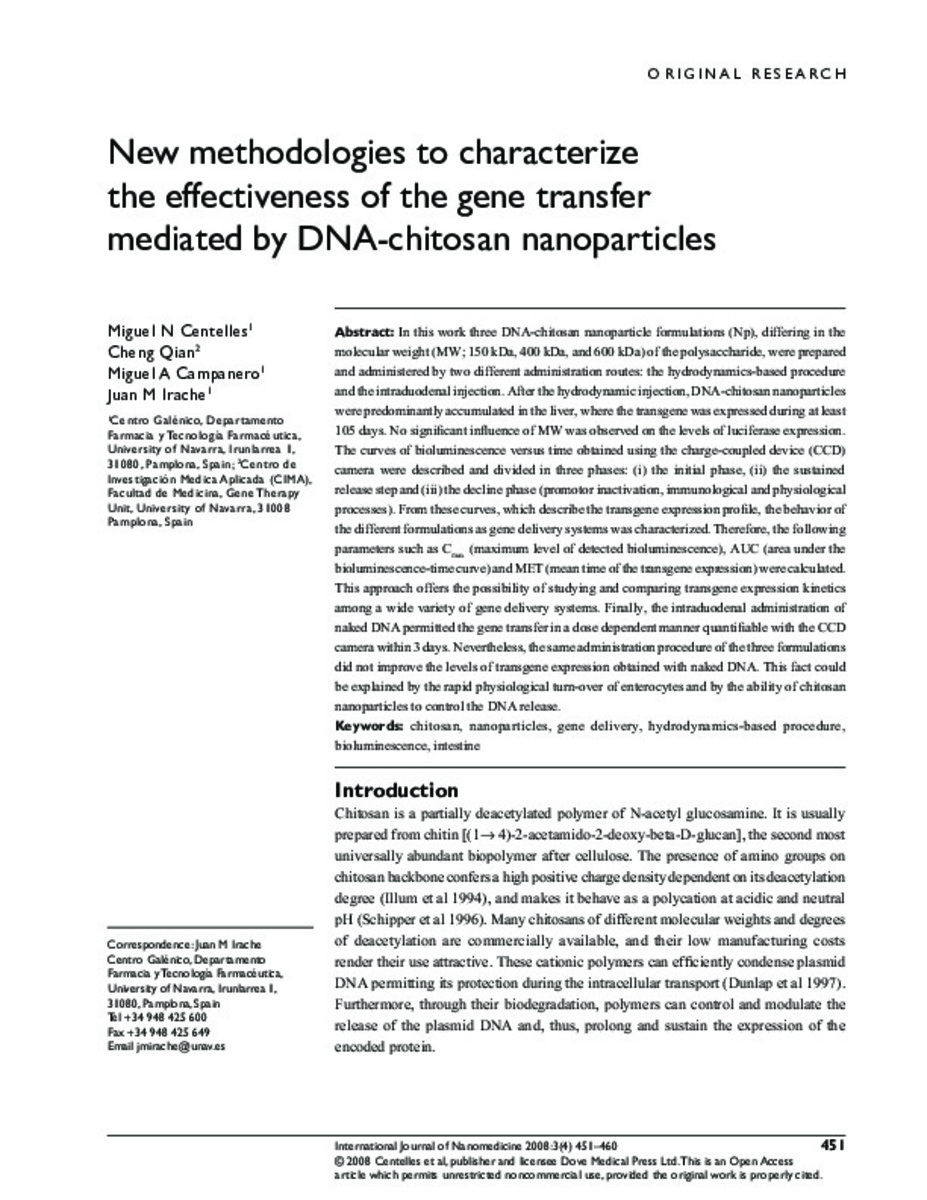New methodologies to characterize the effectiveness of the gene transfer mediated by DNA-chitosan nanoparticles
Keywords:
Chitosan
Nanoparticles
Gene delivery
Hydrodynamics-based procedure
Bioluminescence
Intestine
Publisher:
Dove Medical Press Ltd.
Citation:
Centelles MN, Qian C, Campanero MA, Irache JM. New methodologies to characterize the effectiveness of the gene transfer mediated by DNA-chitosan nanoparticles. Int J Nanomedicine 2008;3(4):451-460.
Statistics and impact
0 citas en

0 citas en

Items in Dadun are protected by copyright, with all rights reserved, unless otherwise indicated.










